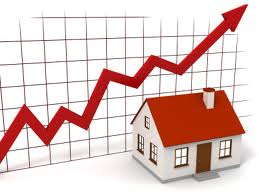 Real estate transactions in late 2012 ended in a down note, according to a recent report by the National Association of Realtors (NAR). After several months of positive gains, existing home sales in December came down a notch from the previous month, and current inventories may be insufficient to justify the rising prices of residential properties in the United States.
Real estate transactions in late 2012 ended in a down note, according to a recent report by the National Association of Realtors (NAR). After several months of positive gains, existing home sales in December came down a notch from the previous month, and current inventories may be insufficient to justify the rising prices of residential properties in the United States.
According to the NAR report, 4.94 million real estate closings took place in December, one whole percentage point down from the 4.99 million in November. The NAR estimates that December's inventory of available listings was just 1.82 million, which is a 22 percent decrease from late 2011. Statements by Lawrence Yun, chief economist at the NRA, indicate that the current inventory is the lowest since May 2005, a period traditionally considered as the peak of the American housing bubble.
Looking for a Silver Lining
The last two months of 2012 were the busiest for real estate agents in the last three years. Home prices are climbing up very quickly in some regional housing markets like Phoenix, where home values have gone up by more than 30 percent over the last 13 months. In fact, median home prices in Phoenix are now back to their levels right before the bubble burst in October 2008.
Rising home prices and multiple bids on homes are usually a good sign, but the current situation does not balance out in terms of supply and demand. Participation by first-time home buyers remains less than stellar, mostly due to the strict mortgage lending environment. Increased activity by real estate investors is always welcome, but what happens when they have no more homes to sell to each other?
Real estate analysts fear that rising home prices and diminished real estate transactions due to insufficient inventory may lead to a price bubble, which is essentially what was observed in December 2012. There are not enough potential sellers due to the sheer amount of homes that are still in a negative equity situation. More than 10 million borrowers are still underwater, and with the new push towards writing down mortgages and modifying home loans, short sales are unlikely to be massively approved.
Home Builders: A New Hope
New construction projects may alleviate the low inventory situation and stabilize pricing through competition, but home builders have learned their lessons and are not rushing into things. They are working at about half of their activity level during the housing bubble. Still, the pace of new residential construction in December was the highest seen in the last four years, according to data from the U.S. Department of Commerce.
The home building industry is also contributing to the overall economy by adding new jobs. Approximately 30,000 construction workers were hired in December, the highest level since late September, 2011.



